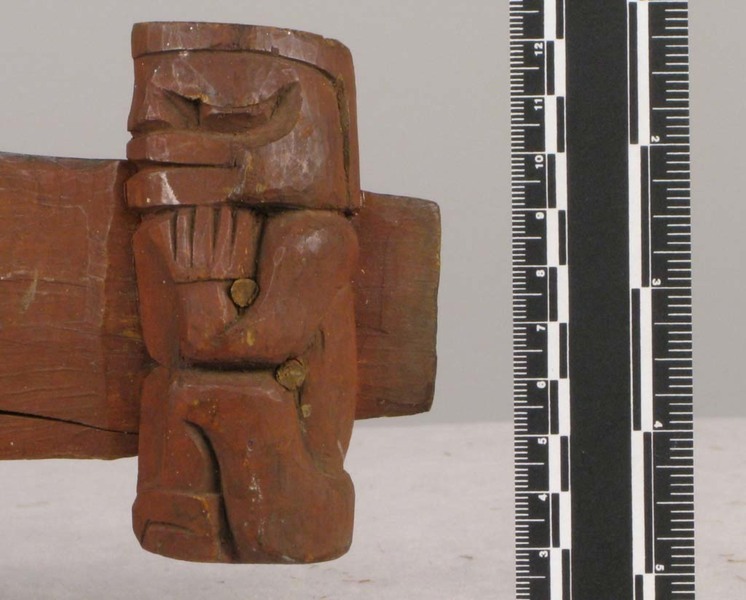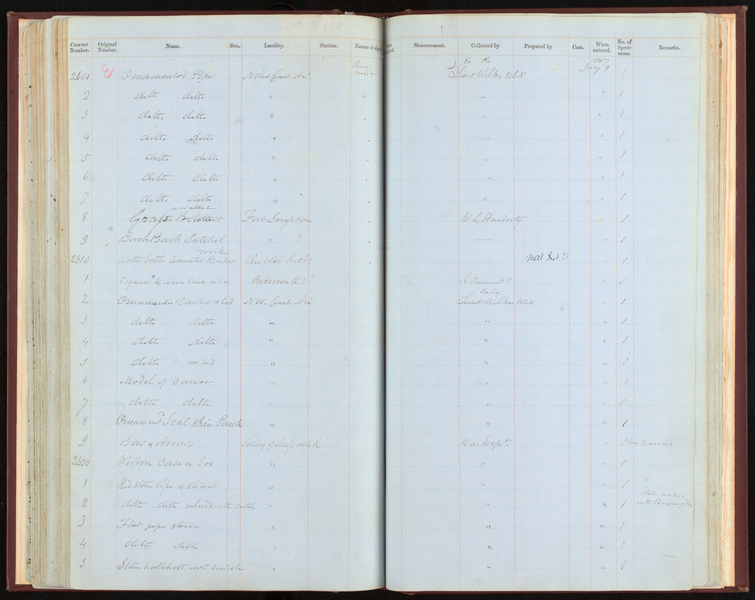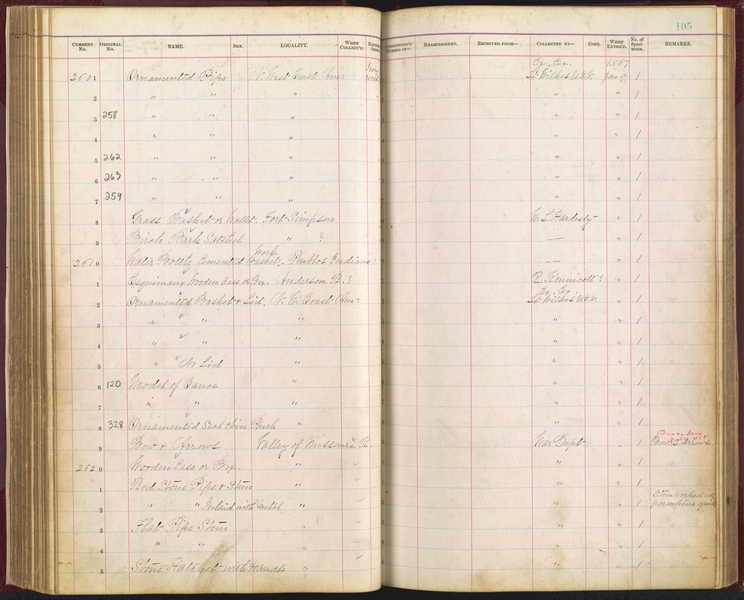Canoe Model Item Number: E2616-0 from the National Museum of Natural History









Notes
Has original Peale # label. Information from Alan L. Hoover, 10-23-2011: This model represents what in the literature is called a manka style canoe after the Kwak'wala name for war canoe. Bill Holm spells it muhnka (also spelt munka). This is an ancient canoe type that disappeared from the coast before the era of the camera. It is known from First Nations models and a few drawings by early visitors to the coast. The bow is either very tall in the form of a vertically oriented Nootka-style prow or is more horizontal terminates in the shape of a bird's head as in the case with # E2616-0. And of course to confuse things there are prows that share characteristics of both styles. The flat-topped stern is somewhat like a Nootka-style but rather than being vertical it is raked (i.e., slopes back). Manka-style models have been collected from the Coast Salish, Nuu-chah-nulth (?), the Kwakwaka'wak, the Haida and possibly the Tlingit. There are Euro-Amerian depictions of manka style canoes in the territories of the Nuu-chah-nulth and Coast Salish, but not to my knowledge among the Haida and Tlingit. I'm still trying to figure out the relationships between versions of the "manka" (in fact is there more than one manka type) and cultural groups, but based on the northern-style two dimensional designs, my guess is that the canoe is either Haida or Tlingit in origin. Two traits that are somewhat uniqure are the vertical stern with the rearward projecting stern top and the little sculpture that is attached horizontally to it. Could the latter be a late addition - the style of the carved figure seems quite different and less accomplished than the graceful bow.
Item History
- Made in USA ? or Canada ?
- Collected in USA ? or Canada ? between 1838 and 1842
- Received from United States Exploring Expedition during 1858
What
- Name
- Canoe Model
- Identification Number
- E2616-0
- Type of Item
- canoe model
Who
- Culture
- Northwest Coast
- Received from
- United States Exploring Expedition
Where
- Holding Institution
- National Museum of Natural History
- Made in
- USA ? or Canada ?
- Collected in
- USA ? or Canada ?
When
- Collection Date
- between 1838 and 1842
- Acquisition Date
- during 1858
Other
- Accession Number
- 66A00050